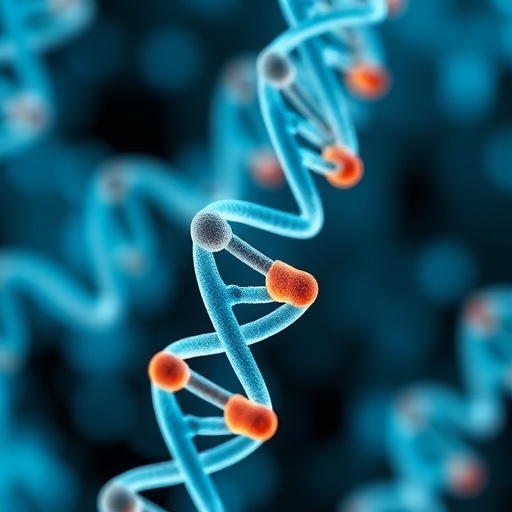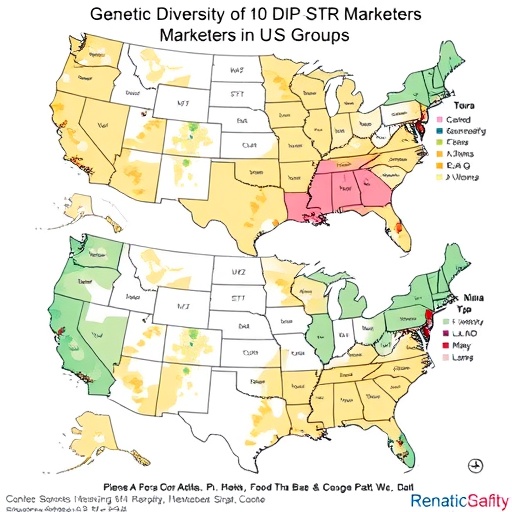
Credit: Baylor College of Medicine
It is known that certain areas of the brain are responsible for certain functions of the body. The cerebellum, a structure found in the back of the skull, is known to be important for the control of movement, while the frontal cortex is responsible for cognitive functions such as short-term memory and decision making. However, as researchers continue to unlock the mystery of how billions of neurons in the brain interact, it is becoming more apparent that it is not that black and white.
Dr. Nuo Li, assistant professor of neuroscience and a McNair Scholar at Baylor College of Medicine, and his colleagues have found the first direct evidence that the cerebellum does more than just control muscle activity. It also plays a role in cognitive functions.
"We knew that the frontal cortex and the cerebellum are anatomically connected with each other," Li said. "We also knew that in humans, cerebellar damage has been known to cause memory or planning problems, so the two might be connected."
Li and his colleagues examined activity in the cerebellum during time periods when animals are not moving, but instead are thinking. To do this, the researchers trained mice in a task that required them to make decisions based on short-term memory. Mice were shown a single object in a specific location. After a delay, the animal had to remember where the object was and indicate its location by licking in a left or right direction. The delay represented a moment when the mice had to use short-term memory to recall where the object was before acting out the correct movement.
Making moves and memories
In previous work, researchers have found memory activity in the frontal cortex during the delay period that predicted what future movement the mice will make. Li and colleagues found that memory activity during the delay period was seen in both the frontal cortex and the cerebellum. Researchers silenced areas of the cerebellum during the delay period, which led to incorrect responses but did not interfere with the movement. At the same time, the memory activity in frontal cortex also was disrupted. This showed that memory activity in frontal cortex was dependent on the cerebellum. They then silenced areas in the frontal cortex, which stopped memory activity in the cerebellum.
"We found that the output of the cerebellum targets the frontal cortex and vice versa. When we disrupt the communication between the two areas of the brain, memory activity is disrupted. Our results show that activity orchestrating a single behavior is coordinated by multiple regions of the brain," Li said.
The cerebellum is known to guide our movement by learning from errors. Li explains that when we learn to shoot a basketball, we initially have lots of missed shots. However, the brain can adjust our shots by adjusting our movements based on errors from the missed shots and eventually produce accurate shots. It is known that the cerebellum is responsible for this motor learning. It combines errors from the missed movements and the movement that was made to produce a more accurate movement.
Li's team currently is pursuing experiments testing this hypothesis that the cerebellum may perform a similar function on brain activity related to thoughts, such as when playing a game of chess.
###
Interested in reading the complete study? Find it in the journal Nature.
Researchers who contributed to the study include Courtney Davis, Alyse M. Thomas, Amada M. Abrego, all with Baylor; Michael N. Economo and Karel Svoboda, both with Janelia Research Campus, Ashburn, Va.; Zhenyu Gao and Chris I. De Zeeuw, with Erasmus MC, Rotterdam, The Netherlands.
Financial support for this project was provided by the Robert and Janice McNair Foundation, the Whitehall Foundation, the Alfred P. Sloan Foundation, the Searle Scholars Program, the National Institutes of Health NS104781, the Simons Collaboration on the Global Brain, the Dutch Organization for Medical Sciences, Life Sciences, an Erasmus MC fellowship, the ERCadvanced and ERC-PoC and the Howard Hughes Medical Institute.
Media Contact
Graciela Gutierrez
[email protected]
713-798-4710
@bcmhouston
https://www.bcm.edu/news
Original Source
https://blogs.bcm.edu/2018/11/15/the-cerebellum-more-than-just-muscle-control/ http://dx.doi.org/10.1038/s41586-018-0633-x





